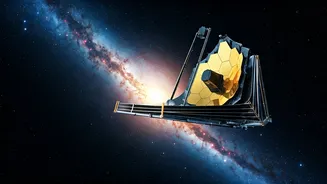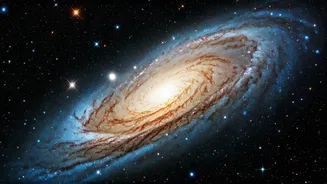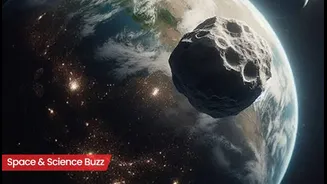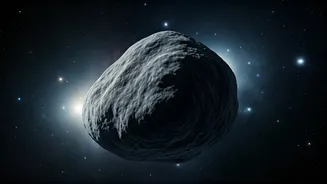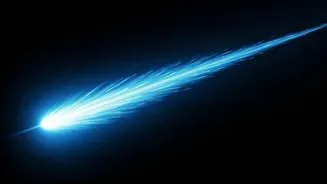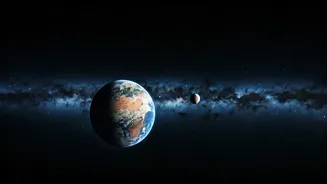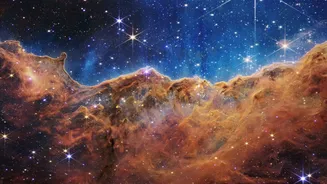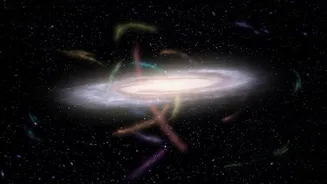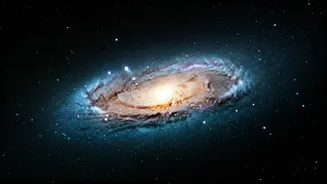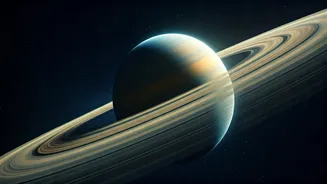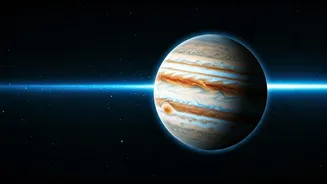Early Universe Chaos
One of the key takeaways from the JWST's observations is the chaotic nature of galaxies in the early universe. The telescope's Near Infrared Camera (NIRCam)
peered into the distant cosmos, uncovering the messy and dynamic early stages of galaxy formation. These findings challenge prior assumptions about the relatively ordered development of these celestial structures. The JWST has captured snapshots of galaxies in their formative years, revealing intense activity, including mergers, starbursts, and rapid changes in shape and structure. This contrasts with earlier models that envisioned a more gradual and settled evolution. The observations point to a far more turbulent and unpredictable beginning for galaxies. This fresh perspective necessitates a re-evaluation of existing theories about how galaxies took shape and evolved over billions of years. The implications of these discoveries are far-reaching, potentially rewriting our understanding of cosmic history and the processes that shaped the universe as we know it today.
Unveiling Cosmic Objects
The JWST's sensitivity has led to the discovery of unusual and previously unseen cosmic objects. Among the potential finds is a brand-new class of cosmic objects, possibly black hole stars, which defy existing classifications. These black hole stars could represent a previously unknown type of celestial body, challenging our current comprehension of the universe's building blocks. Simultaneously, the telescope has identified numerous mysteriously luminous objects, possibly galaxies or something else entirely. These enigmatic sources are prompting further investigation to determine their nature and origin. The discoveries add a layer of complexity to our view of the universe, hinting at a menagerie of phenomena and celestial entities awaiting discovery. Scientists are using the JWST's data to test the limits of known physics and push the boundaries of current cosmological models.
Challenging Existing Theories
Several observations from the JWST are challenging established theories about the universe's evolution. For example, the discovery of early black holes, looking 'as far back as you can practically go,' calls for a re-evaluation of how these objects formed. The telescope has also potentially spotted controversial 'dark stars,' which could alter the narrative about the first stars in the universe. Similarly, the identification of a skyscraper-size asteroid hidden in the sun's glare, the investigation of mysterious glow at the Milky Way's center, and the recent revelation that Earendel, the most distant star ever discovered, may not actually be a star are all shaking up theories. These findings force scientists to reconsider long-held beliefs and refine their models to accommodate new realities. The JWST acts as a key instrument in a process of constant scientific review, promoting a deeper and more precise understanding of the universe.
Advancing Scientific Methods
Beyond its direct observations, the JWST is enabling the refinement of other astronomical methods. For instance, the telescope's discoveries of a giant hidden 'bridge' and a record-breaking tail between two dwarf galaxies enhance the methods employed by astronomers in observing and understanding galactic interactions. It allows the cross-validation of data and theory and promotes the establishment of better and more precise observational techniques. Additionally, the breakthroughs associated with the telescope, like the development of the Google's breakthrough 'Quantum Echoes' algorithm and the creation of ultrapowerful, squishy robotic 'eye' that focuses automatically, is accelerating scientific advancement. The scientific community is in the process of applying these insights to the larger framework of cosmological investigation.
